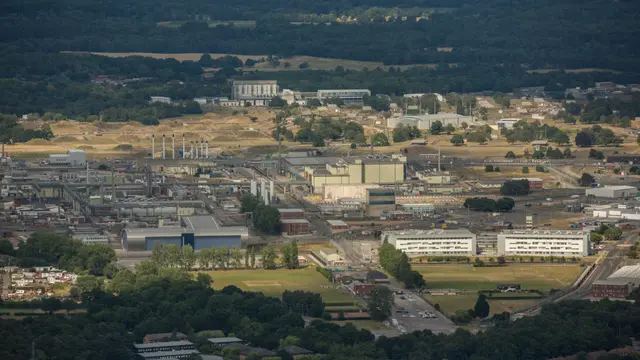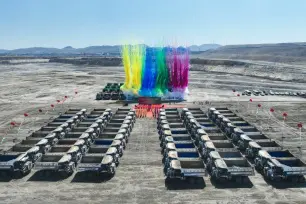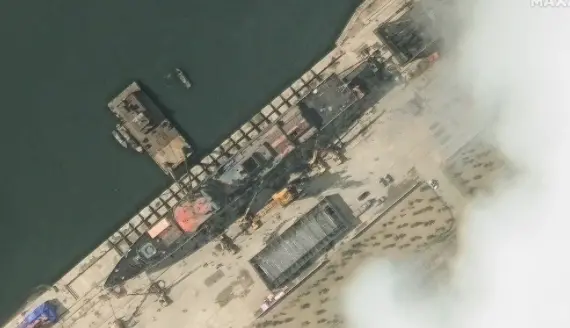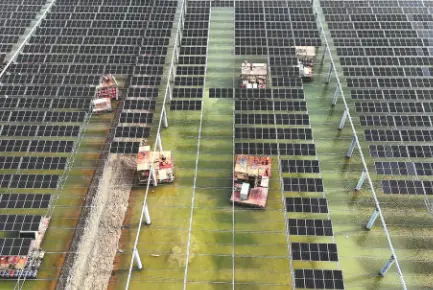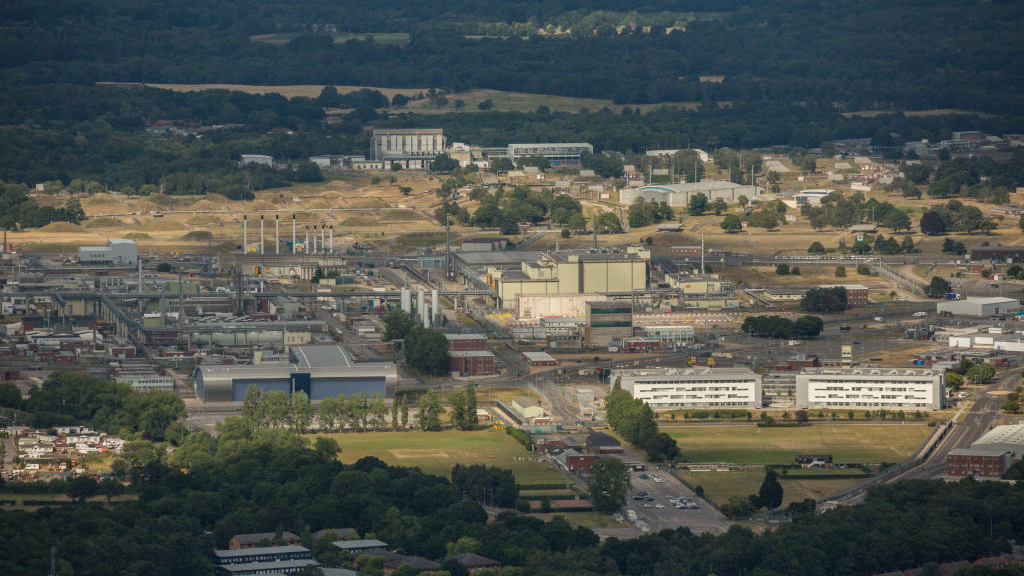
The Atomic Weapons Establishment at Aldermaston, Berkshire, UK, July 8, 2017. /Getty
Editor's note: Lan Shunzheng is a research fellow at Charhar Institute and a member of the Chinese Institute of Command and Control. The article reflects the author's opinions, and not necessarily the views of CGTN.
On November 2, the British Ministry of Defense said that it planned to take back the Atomic Weapons Establishment (AWE) control and carry out nationalization management. It is not difficult to see that the British side showed its pursuit of the nuclear force independence trend.
After the successful test of the atomic bomb in 1952, Britain became the third country possessing nuclear weapons in the world after the United States and the Soviet Union.
However, for a long time, Britain's nuclear weapons depended heavily on the United States.
In 1958, the UK and the U.S. signed the Mutual Defense Agreement. Under this agreement, Britain could acquire relevant nuclear weapon technology from the U.S. to develop nuclear weapons, use American laboratories to conduct tests, and conduct nuclear tests at America's Nevada nuclear test site.
In 1962, the two countries signed the Nassau Agreement, which stipulated that the United States should provide Britain with arctic star submarine-launched missiles, nuclear warheads and submarines loaded with missiles should be developed by Britain itself, and the launching right could be controlled by Britain.
However, Britain's nuclear force must be part of NATO's nuclear force, and the key to launch should be jointly managed by the United States and Britain. Since then, Britain's nuclear strategy has been incorporated into the global strategy of the United States, and Britain has almost completely lost its nuclear independence.
After the Cold War, Britain's domestic views on whether to restore independent nuclear deterrence were not uniform. Some Britons believe the UK should embrace the U.S. "nuclear umbrella" and shift the high cost of renewing and maintaining its nuclear arsenal to health, education, social assistance, and global warming prevention.
It is also emphasized that as a major country, Britain should choose and develop an independent nuclear deterrent strategy, gradually reduce its dependence on the U.S. Trident missiles, and intensify the development of its own nuclear weapons. Britain's dependence on America for defense and security is both a blessing and a curse, but its nuclear deterrent is deeply embarrassing.
For example, the British media once wrote that Britain's independent nuclear deterrent was a carefully woven political myth designed to provide false comfort to ordinary British people. It is said that former Royal Navy officers have privately confirmed that the Americans know where British submarines are located and that it would be almost impossible to fire a missile without the data and satellite systems provided by the Americans.
Obviously, the British government's plan to reclaim AWE showed its support for the idea of establishing an independent nuclear deterrent strategy.
At present, Britain's nuclear deterrence mainly relies on four avant-garde class nuclear submarines, each of which is equipped with 16 U.S.-made D5 Trident submarine-launched ballistic missiles, each of which can carry eight nuclear warheads and have a range of more than 7,400 kilometers. The Atomic Weapons Establishment, which is located in Aldermaston, south of England, is the main institution responsible for manufacturing and maintaining the "Trident" nuclear deterrent warhead for British nuclear submarines.
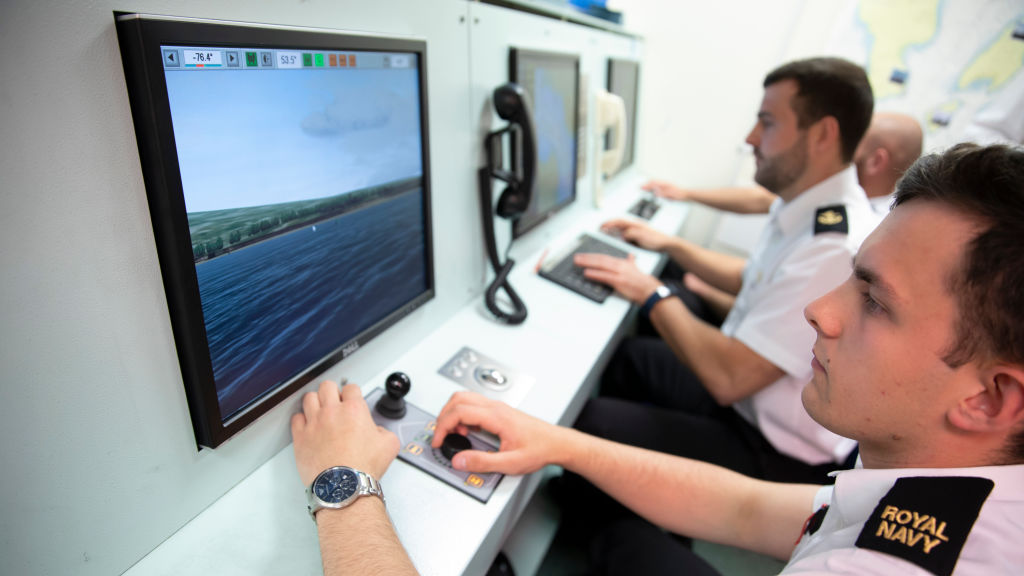
Submariners undergo training at HMNB Clyde, which is the home of the UK's Trident nuclear deterrent in Faslane, Scotland, UK, April 29, 2019. /Getty
Meanwhile, the reliability of avant-garde nuclear submarines and Trident systems, both of which have been in service for over 20 years, is worrying. Therefore, in 2015, the British Parliament approved the Trident nuclear weapon system renewal plan worth about 31 billion pounds ($41 billion) and approved the construction of four new-generation Dauntless-class strategic nuclear submarines to replace Vanguard-class nuclear submarines.
Britain is also actively promoting the development of its own W93 nuclear warhead and ensuring compatibility with the Trident system. It is expected that the new nuclear weapon system will be put into service around 2030, and AWE will undoubtedly play an important role in it.
Therefore, it can be said that the research institute is of great importance to British nuclear deterrence regardless of the time. But since 1999, AWE has been outsourced to a joint management company by the British government, Lockheed Martin of the U.S. owns 51 percent of the group, Jacobs Engineering of the U.S. and Serco of the UK each own 24.5 percent. This means that AWE has always been dominated by American companies, which greatly influenced Britain's pace of pursuing nuclear independence.
It is also reported that there are a lot of loopholes in the management of the research institute. According to statistics, there have been 10 "abnormal" safety accidents with AWE in 2019, such as cooling water leakage, vacuum tube improperly connected to the chuck, chuck safety mechanism operation error, etc., occurring once every five weeks on average.
All of which makes Britain feel compelled to take back AWE. It is reported that the British Ministry of Defense said on November 2 that it planned to regain direct control over the operation and development of AWE from the above three companies in June 2021.
According to the British media, the British Ministry of Defense is going to take action in the next few days at the earliest and plan to renationalize AWE research. It means that AWE will officially return to the British government next year after more than two decades of privatization.
To sum up, Britain's nuclear deterrent policy is likely to be more independent in the future.
(If you want to contribute and have specific expertise, please contact us at [email protected].)
 简体中文
简体中文

